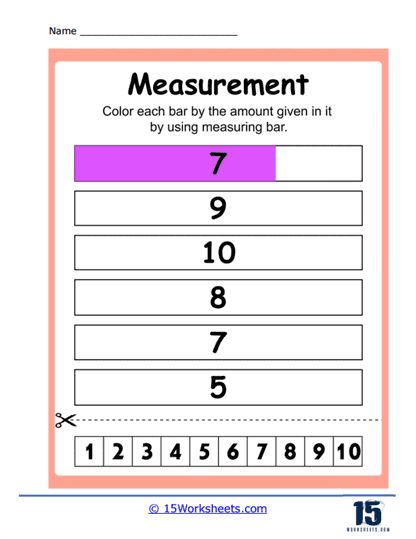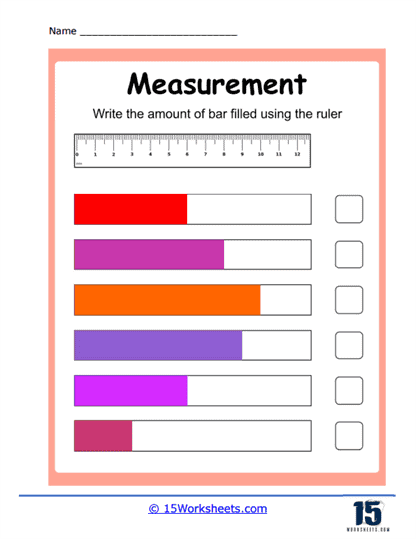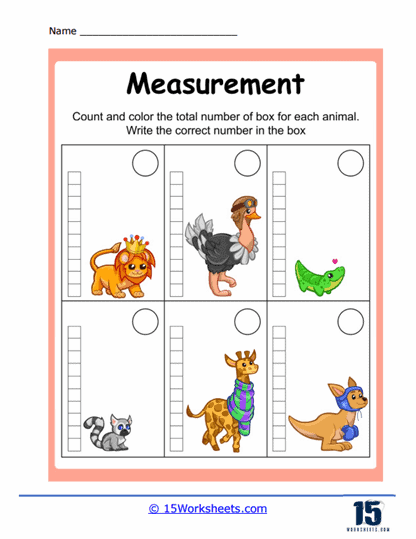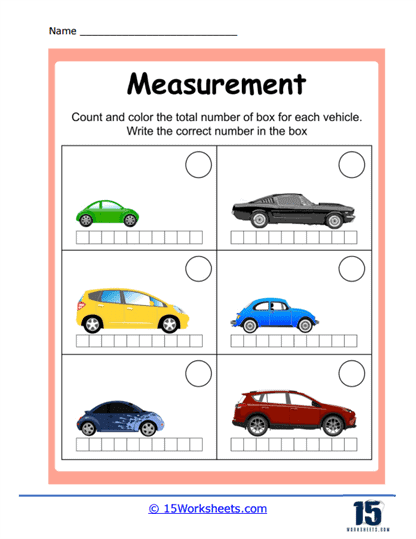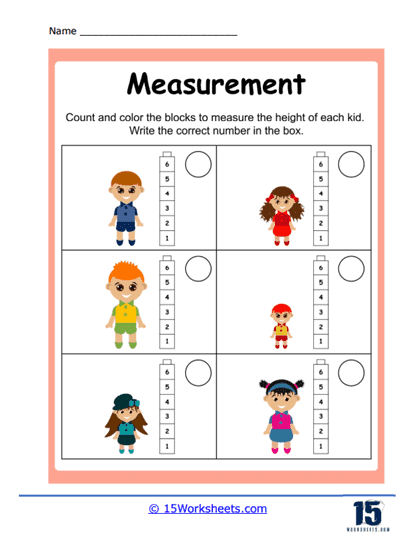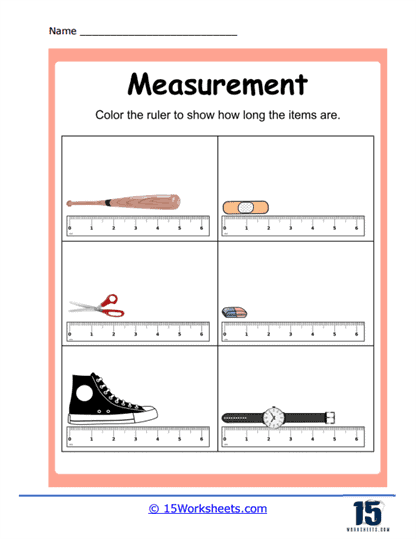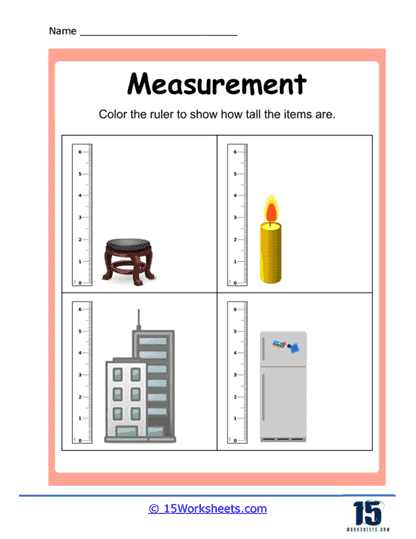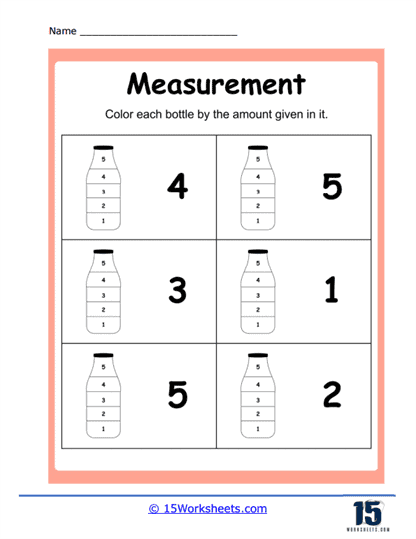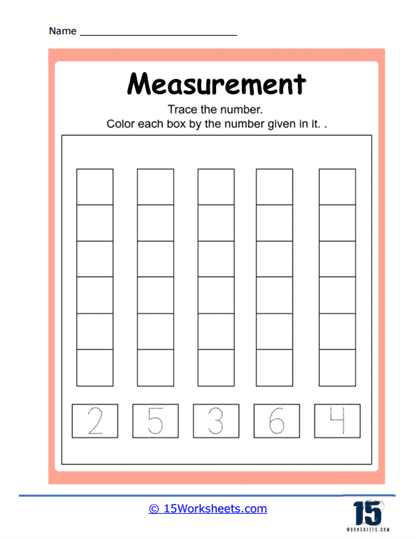Measuring Length Worksheets
About These 15 Worksheets
Length is one of the fundamental dimensions that we encounter in our daily lives. From early childhood, we have an innate understanding of “short” versus “long,” but formalizing this understanding and relating it to standard units of measurement becomes a core aspect of early education.
These worksheets were create to introduce, reinforce, and expand students’ understanding of length as a quantitative attribute of objects. They teach students to measure objects using standardized units of measurement, such as millimeters, centimeters, meters, inches, feet, and yards, among others. These worksheets encompass a broad range of exercises to cater to different age groups and proficiency levels.
Types of Exercises on These Worksheets
Understanding Units of Length – Initial exercises often introduce the concept of units of length. Students might match objects to appropriate units (e.g., the length of a pencil might relate to centimeters, while the length of a road might relate to kilometers). This familiarizes students with different units of length and develop an intuition for the relative magnitude of each unit.
Using a Ruler or Measuring Tape – Exercises that require students to use these tools to measure objects in either metric or customary units. This helps develop practical skills in using standard tools to measure length accurately.
Estimating Length – Before measuring, students might be asked to estimate the length of an object, and then compare their estimate to the actual measurement. This type of task can help enhance student intuition for length and improve their estimation skills.
Comparing Lengths – Problems where students are asked to compare the lengths of two or more objects and determine which is longer or shorter. This can help strengthen analytical thinking and foster an understanding of relative lengths.
Converting Between Units – Exercises that involve converting lengths from one unit to another, for instance, converting inches to feet or centimeters to meters. This solidifies understanding of the relationships between units within a measurement system and improve calculation skills.
Measuring Path Lengths – Exercises might present mazes or paths and ask students to measure the length of a path from start to finish. This blends spatial understanding with length measurement, emphasizing the concept that length isn’t always a straight line.
Exploring Perimeter – Although more closely related to the broader topic of geometry, some worksheets might introduce the idea of perimeter as the total length around shapes. This sets the foundational knowledge for understanding perimeters and their relation to length.
What Do These Worksheets Teach Students?
Fundamental Concepts – At their core, these worksheets introduce the fundamental idea of length and the standardized units we use to quantify it.
Practical Skills – Through hands-on exercises, students learn to use tools like rulers and measuring tapes, skills they’ll use throughout their lives.
Analytical Abilities – By comparing, estimating, and solving word problems, students hone their analytical and problem-solving skills.
Mathematical Proficiency – Converting between units and tackling word problems integrates other areas of mathematics, like arithmetic, into the study of length.
Real-world Application – Word problems and practical measurement exercises demonstrate the omnipresence of length in the real world, from architecture to travel.
Estimation – This important skill is fostered through exercises that challenge students to make educated guesses about lengths before measuring.
Unit Relationships – By converting between units and understanding scales, students gain a deeper comprehension of how different units of length relate to each other.
These worksheets can help you transform an everyday concept, length, into a quantifiable, measurable attribute and lay the groundwork for more advanced topics in mathematics and science. By mastering the exercises in these worksheets, students not only gain a practical skill set but also foster a deeper appreciation for the world’s inherent measurability and structure.





